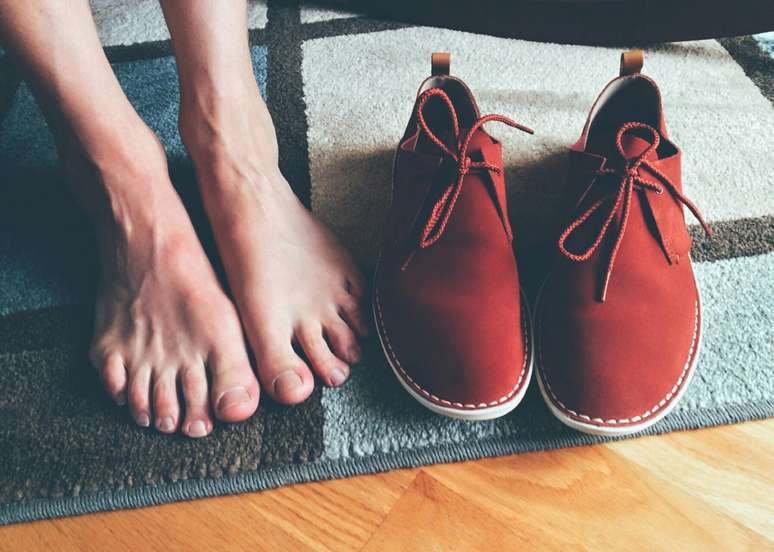Discover the advantages, risks and care of this practice which has become very popular in gyms
You may have seen someone in your gym by making a barefoot training, and this is a practice that has gained popularity between bodybuilder and functional training. But is it really advantageous or can you take risks? Fábio Vieira, PhD in Movement Human Movement and Postdoctoral Sciences in neuroscience, clarifies this problem and discusses the advantages and care necessary for those who want to join this training style.
Why train barefoot?
According to Dr. Fábio Vieira, one of the main reasons that lead people to train barefoot is the improvement of proprioception, which is the body’s ability to recognize its position in space. “When we remove the shoes, there is an increase in the activation of the intrinsic muscles of the foot and the recruitment of the stabilizing muscles of the ankle and knee, directly influencing stability and motor control,” he explains.
Furthermore, it underlines that without the damping of tennis, there is a better neuromuscular response, which ends up making movements more efficient and natural. This is particularly advantageous for resistance exercises such as squats, surveys on earth and advancement, since direct contact with the soil promotes the generation of resistance and improves the distribution of the load.
Science confirms the benefits, but there are warnings
Studies indicate that barefoot training can improve motor control and strengthen the muscles of the foot and ankle. However, a transition period is needed to avoid excessive overload, especially in those who are used to wearing high degree shoes. “Scientific literature shows that training without footwear alters the muscle activation model and the distribution of the forces applied to the ground. This can be useful in some situations, but it can also increase the risk of injuries if the adaptation is not well oriented”, warns the expert.
The magic of biomechanics
The doctor explains that the main difference between tennis and barefoot training is in the way the body distributes load and responds to the impact of the year. Sports Tennis offers dampening and support, which alters the interaction with the feet with the ground. Without it, the foot plays a more active role in impact and stabilization, increasing the demand on the muscles involved in the activity. “Biomechanical studies show that training without sneaker leads to greater activation of the next chain, promoting more natural and efficient movements of movement such as squats and Olympic surveys. But if the person does not have correct mobility and strength in the feet and ankles, the absence of shoes can generate harmful compensation,” underlines Fabio and warns.
So barefoot training can also favor stability, balance and neuromuscular strength. The result is a better performance in the exercise that requires motor control, such as the survey on Earth and unilateral movements. However, the transition, if performed sharply, can increase the risk of injuries such as plantar fasciitis, tendonitis and excessive stress in the metatarsal. “If the feet are used for the support of the footwear, they may not be ready to manage the new load model,” warns the expert.
For what activities are they indicated
Barefoot training can be particularly advantageous for:
- Bodybuilding: Squat, survey on earth, progress and rigid;
- Functional training: Movements that involve balance and isometric force;
- Yoga and Pilates: To encourage neuromuscular connection to the ground;
- Training for mobility and rehabilitation: Strengthen the lower muscle chain.
What should be avoided
Despite the advantages, some activities are not recommended without footwear:
- Race on hard surfaces: An excessive impact can affect the joints;
- Intense pliometry (jumps, canned jumps): Requires greater damping;
- Training in places with sharp objects or slippery surfaces.
What are the risks and how to prevent them
The main risks of barefoot training include:
- Fascial plantation: Inflammation of the footbed by repetitive stress;
- Tendonitis: Especially in the Achille tendon;
- Stress fractures: Lack of absorption of the impact.
To minimize the risks, Dr. Fábio Vieira recommends:
- Make progressive transition;
- Strengthen the feet and ankles;
- Choose safe surfaces;
- Entrusted to the guidance of a physical education professional.
Pay attention to the surfaces
Barefoot training on hard surfaces can increase the load on the joints, which requires a period of adaptation. To reduce this impact, it is recommended:
- Begins with low intensity exercises;
- Work mobility and ankle stability;
- Opt for intermediate floors (such as mats) before rigid surfaces.
In irregular soil, the risk of twisting increases. Therefore, a good balance and motor control are essential before trying this type of training. That is, barefoot training can be an interesting strategy, but requires assistance and professional guide to be sure and effective.
Source: Terra
Ben Stock is a lifestyle journalist and author at Gossipify. He writes about topics such as health, wellness, travel, food and home decor. He provides practical advice and inspiration to improve well-being, keeps readers up to date with latest lifestyle news and trends, known for his engaging writing style, in-depth analysis and unique perspectives.







